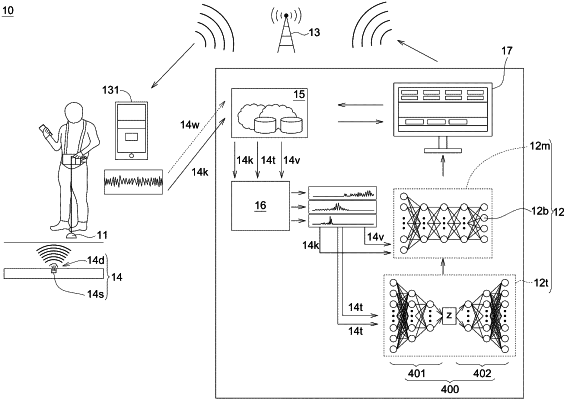| CPC G01N 29/12 (2013.01) [G01N 29/14 (2013.01); G01N 29/348 (2013.01); G06N 3/04 (2013.01); G06N 3/08 (2013.01); G06N 20/10 (2019.01); G01N 2291/0289 (2013.01)] | 15 Claims |

|
1. An acoustic resonance diagnostic method for detecting structural degradation of an under-test section of an under-test structure, the method comprising:
building a database and storing reference acoustic signals in the database as training acoustic signals which are derived from mathematic calculations and/or based on historic acoustic data of structures similar to the under-test section;
classifying the training acoustic signals into transient training acoustic signals and steady training acoustic signals according to states of the reference acoustic signals;
capturing a plurality of under-test sound wave signals as captured under-test acoustic signals from the under-test section and storing the captured under-test acoustic signals also in the database;
using an artificial intelligence (AI) to filter out acoustic signals in the database that are invalid for detecting structural degradation of the under-test section;
building a training model using a deep neural network (DNN);
inputting at least two filtered transient training acoustic signals as training acoustic signals to the training model to carry out a training of the training model;
building a diagnostic model according to a result of the training using a convolutional neural network (CNN);
inputting a remaining portion of the filtered training acoustic signals, being the filtered steady training acoustic signals, as verifying acoustic signals to the diagnostic model, to verify that the diagnostic model has been trained thus can successfully detect transient acoustic signals, the diagnostic model then outputs detection signals and labels the detection signals as leakage frequency, metal frequency, ambient frequency, or noise frequency;
inputting the captured and filtered under-test acoustic signals to the trained diagnostic model;
determining a structural degradation state of the under-test section by comparing the inputted captured and filtered under-test acoustic signals to the labeled detection signals in the trained diagnostic model.
|